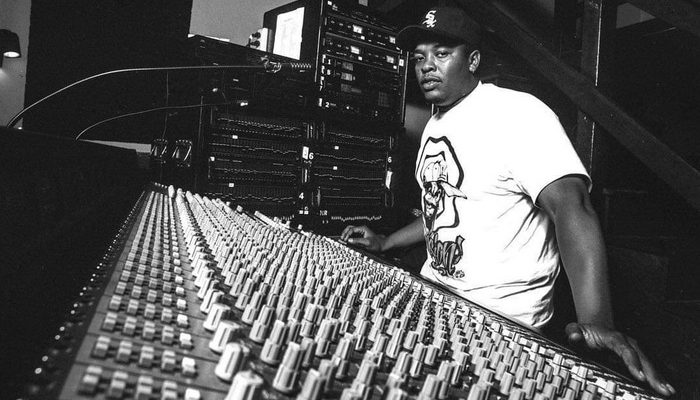

You shouldn't take it too seriously." Recording A lot of times the media just takes this and tries to make it into something else when it's all entertainment first. I just basically do hard-core hip-hop and try to add a touch of dark comedy here and there.
#Dr dre the chronic album artwork movie#
You've even got a 'Pause for Porno.' It's got everything that a movie needs." Speaking of how he did not record the album for club or radio play and that he planned the album simply for entertainment with comical aspects throughout, he commented "I'm not trying to send out any messages or anything with this record. So you've got buildups, touching moments, aggressive moments. It's a movie, with different varieties of situations. Dre stated, "Everything you hear is planned. The album was intended to be released as a mixtape with tracks linked through interludes and turntable effects, but was then changed to be set up like a film. What more do I need to do? How many platinum records have I made? O.K., here's the album – now what do you have to say? Magazines, word of mouth and rap tabloids were saying I didn't have it any more. He stated:įor the last couple of years, there's been a lot of talk out on the streets about whether or not I can still hold my own, whether or not I'm still good at producing. These doubts came from the fact that he had not released a solo studio album since The Chronic (1992). Dre spoke about his motivation to record the album and how he felt that he had to prove himself to fans and media again after doubts arose over his production and rapping ability. In an interview with The New York Times, Dr. Dre eventually decided to release the album as simply 2001. At this point, Priority decided not to honor the original agreement and threatened to sue Dre if the Chronic trademark were to be used in any capacity. Shortly after, Interscope began a big budget promotional campaign for Chronic 2001. Dre's album would now be named Chronic 2001. Īfter the release of Chronic 2000, they announced that Dr.

According to his lawyer Howard King, "both sides agreed that we'd allow the other to use the title, and then let the public decide which one they preferred". When Aftermath found out that Priority and Death Row planned to use the same name for their album, Dre sought legal action. Dre's album since notification of the trademark use was required by his label Aftermath Records. Knight was tipped off about the name of Dr. Death Row owned the trademark for The Chronic as did Interscope Records who previously distributed Death Row.

However, this version of the album was scrapped after Dre's departure from Death Row Records.Īfter the creation of Aftermath Entertainment, the album was initially titled Chronic 2000 until Priority Records, who had become Death Row Records' new distributor decided, in conjunction with Death Row's founder and then-CEO Suge Knight, to call their compilation album Chronic 2000. Dre along with the 2Pac single " California Love", which wasn't included on his album All Eyez on Me for this reason. It was to include various new songs by Dr. In 1995, the original successor to The Chronic was to be titled "The Chronic II: A New World Odor (Poppa's Got A Brand New Funk)". 2001 received generally positive reviews from critics, many of whom praised the music although some found the lyrics objectionable. It produced 3 singles that attained chart success and has been certified 6× Platinum by the Recording Industry Association of America ( RIAA) and as of August 2015 the album has sold 7,800,000 copies in the United States. Billboard 200 chart, selling 516,000 copies in its first week. The album debuted at number 2 on the U.S. rappers such as Hittman, Snoop Dogg, Kurupt, Xzibit, Eminem, and Nate Dogg.Ģ001 exhibits an expansion on Dre's debut G-funk sound and contains gangsta rap themes such as violence, crime, promiscuity, sex, drug use, and street gangs. Dre and Mel-Man, as well as Lord Finesse, and features several guest contributions from fellow U.S. It was released on November 16, 1999, by Aftermath Entertainment and Interscope Records as the follow-up to his 1992 debut album, The Chronic. 2001 (sometimes called The Chronic 2001) is the second studio album by rapper and hip hop producer Dr.


 0 kommentar(er)
0 kommentar(er)
